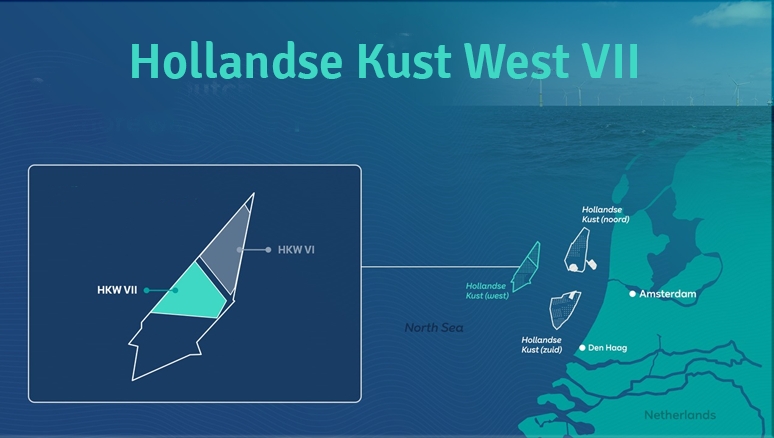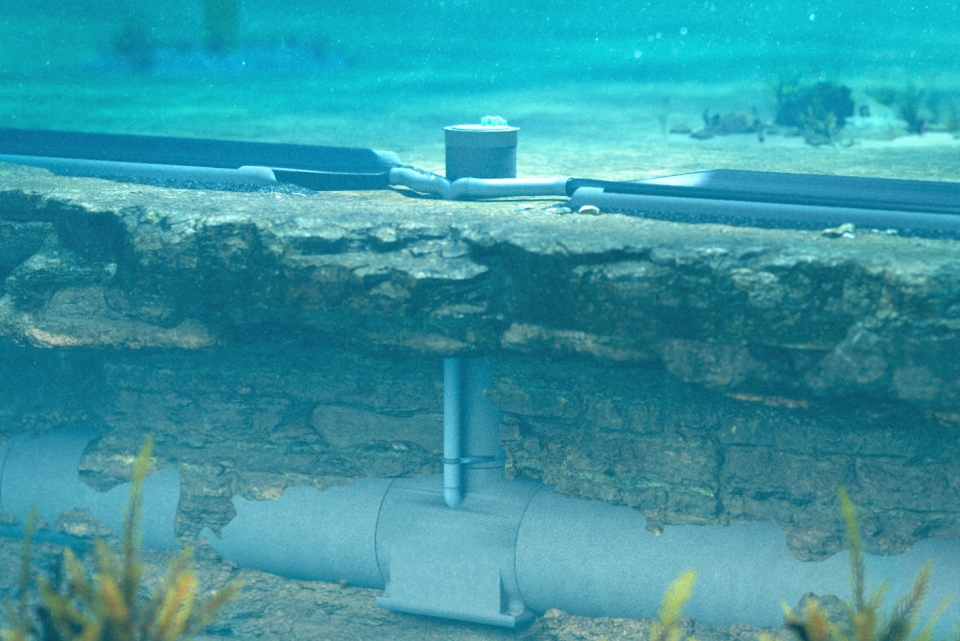Ocean Grazer will start making the Ocean Battery market-ready for large-scale energy storage in the North Sea. RWE has selected the Groningen-based startup to join the development of the Hollandse Kust West VII offshore wind farm, which has been designated to demonstrate system integration.
Earlier this week, it was announced that SolarDuck will also partner with RWE at Hollandse Kust West (HKW) to deploy a floating solar plant at the wind farm. HKW is to demonstrate the energy system of the future where 100 per cent sustainable electricity and green hydrogen will be produced.
Large-scale energy storage with the Ocean Battery is crucial to ensure continuity and stability of the power grid in the event of large-scale production based on renewable sources. This is necessary because production is no longer determined by demand as with conventional power plants, but will increasingly be determined by weather conditions. Yet, we all want the lights to stay on at night even when there is no wind or sun. This requires storage.
At the same time, (cost-)efficient production of green hydrogen without an energy storage system like the Ocean Battery is impossible. The electrolysers needed for this require a constant input and cannot run economically if they are only used when the wind is strong.
Also read: SolarDuck builds 5-MW of floating solar power at Dutch offshore wind farm
Blueprint for the future
With the development of this wind farm, around one million households could be supplied with renewable energy.
‘This is therefore a unique opportunity for Ocean Grazer to demonstrate our disruptive technology and we are proud that our system is part of this blueprint for the future,’ says CEO Frits Bliek of Ocean Grazer. ‘Winning this tender is therefore the recognition of a major market player like RWE and the Dutch government as an innovative concept that will play a prominent role in the energy transition. In this way, the Ocean Battery contributes to the Netherlands’ ambitious goals of developing 21 GW of offshore capacity by 2030 and growing this to 70 GW by 2050.’

Ocean Battery
The modular design of the Ocean Battery basically allows gigawatt hours of electricity to be stored at the bottom of the sea or a lake in a cost-efficient and environmentally friendly way. Because the technology uses fully mature ‘Pumped Hydro Storage’ technology (technology from a hydroelectric power plant), it is highly reliable and also has a long lifespan. This technology can also compensate fluctuations due to changing weather conditions effortlessly and continuously. This is fundamentally different from electrochemical batteries.
Also read: Ocean Battery to tackle fluctuations in renewable energy production
Under current market conditions, the Ocean Battery system earns itself back in a few years because price fluctuations in the energy market are so large. Those fluctuations reflect the surpluses and shortages of electricity on the market, and the Ocean Battery makes it possible to temporarily store surpluses and sell them again when there are shortages. This prevents surplus wind energy from having to be dumped on the market when the wind blows hard and has little value. In this way, Ocean Grazer seeks to make renewable energy more competitive with conventional generation and all barriers to switching to renewable energy fall away.
Bliek: ‘To be part of this first unique system integration project as an innovative startup will undoubtedly open up new opportunities for us as a company. The time is ripe. We are more ready than ever.’
Also read: Ocean Grazer founder wins Engineer of the Year Award








